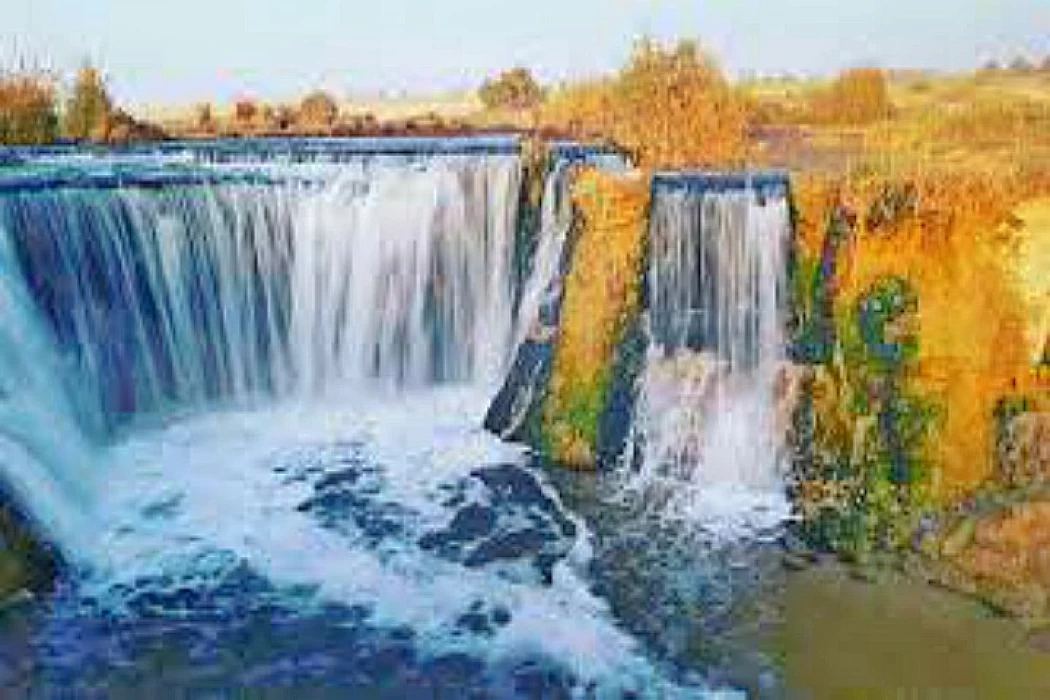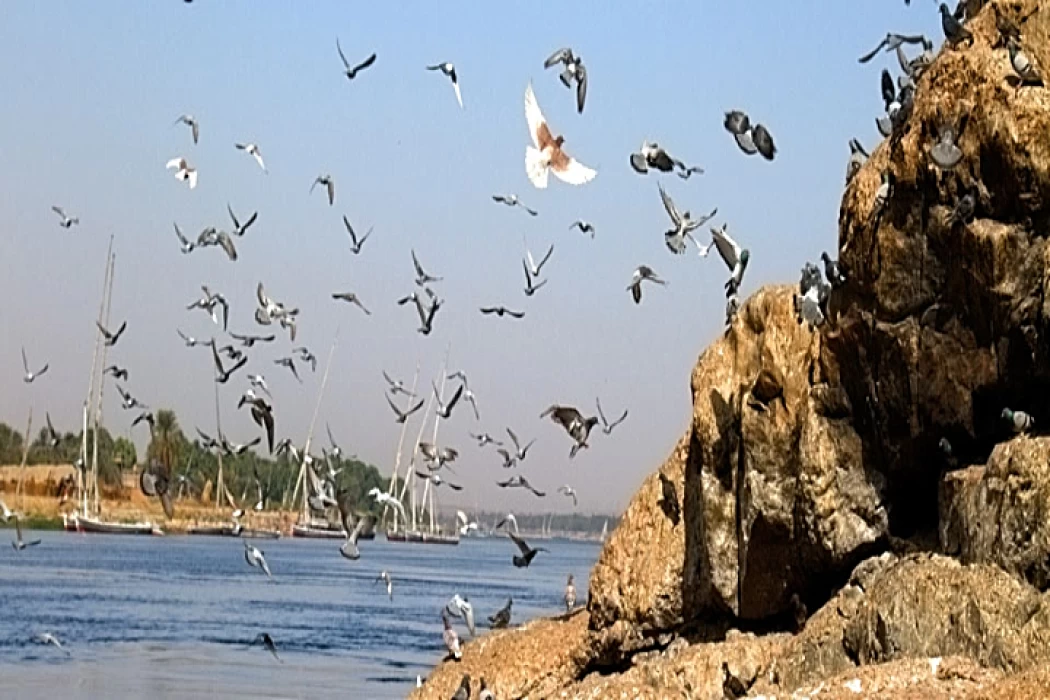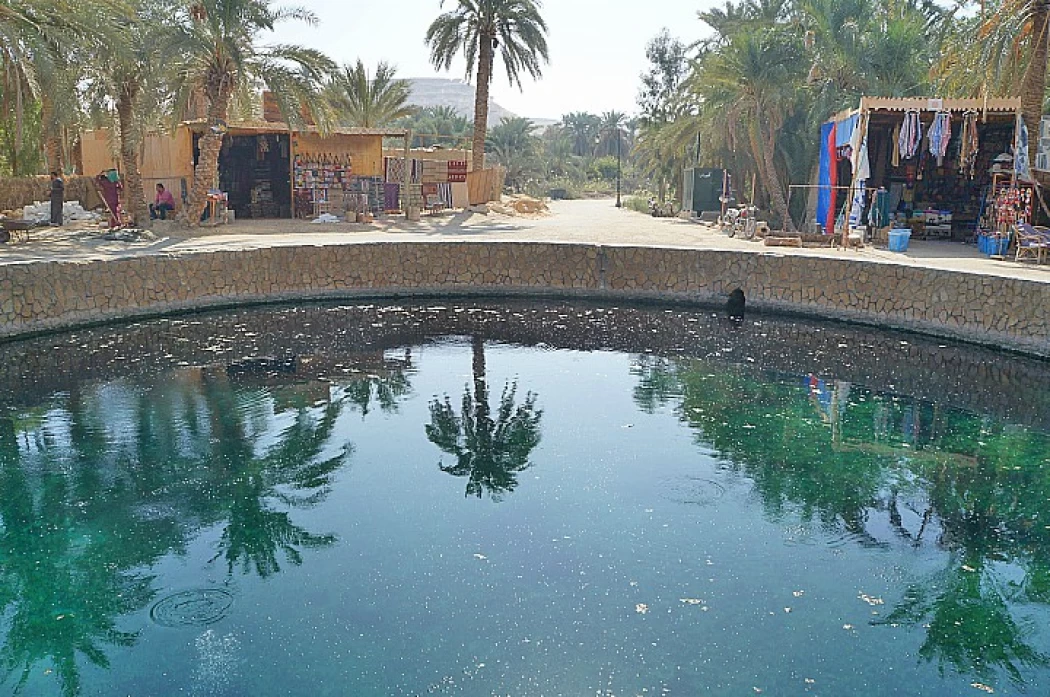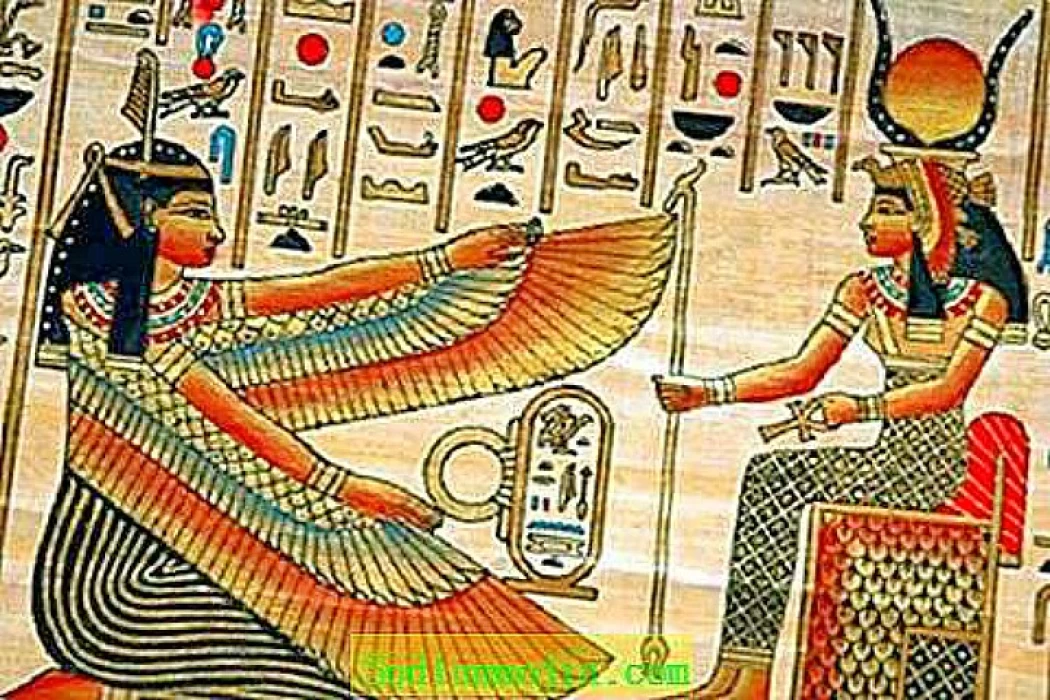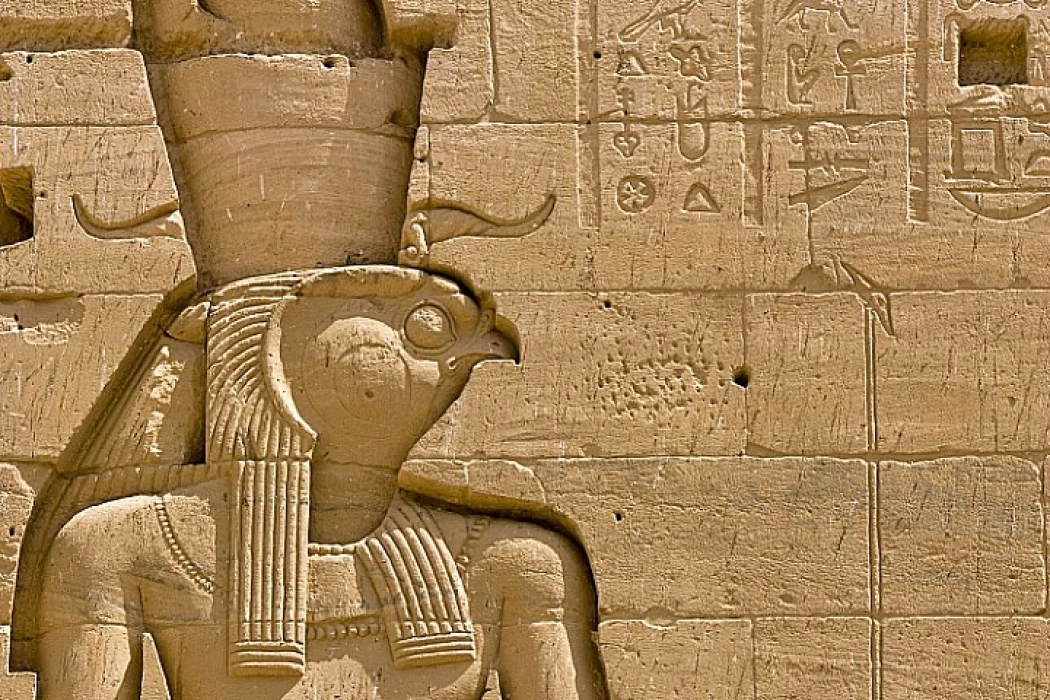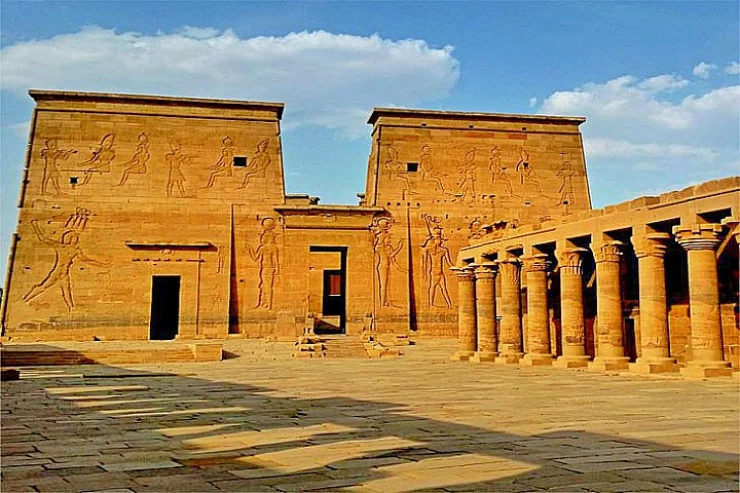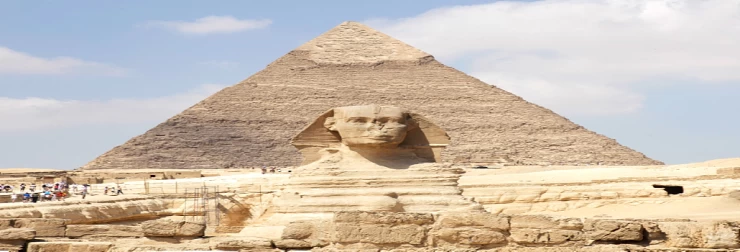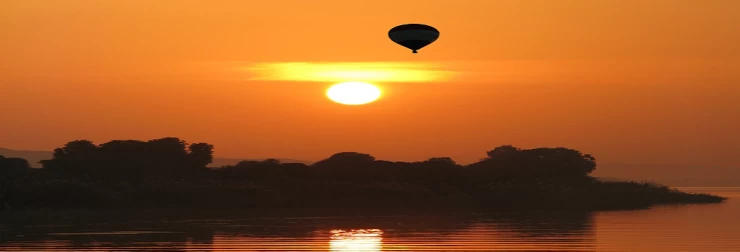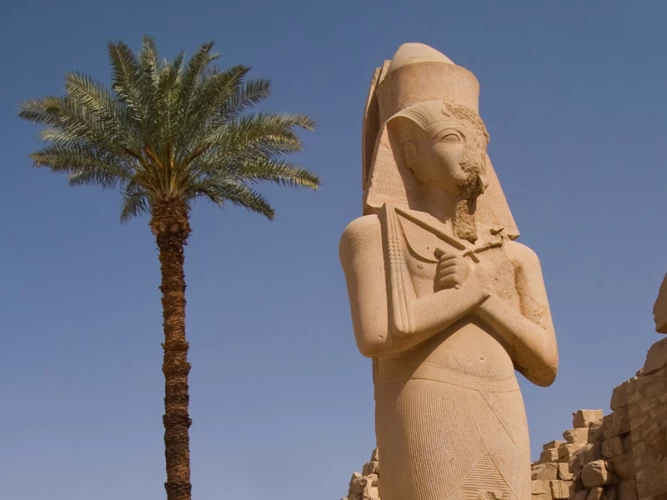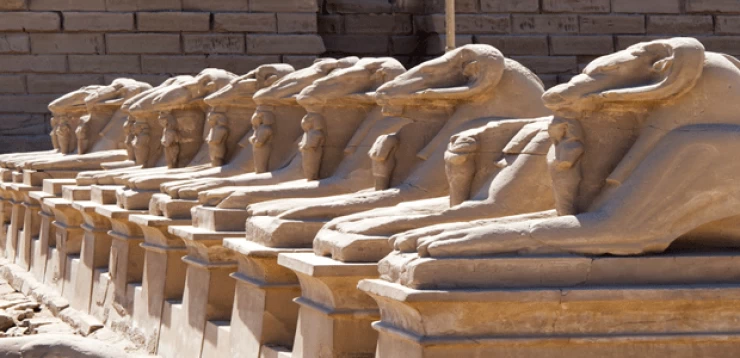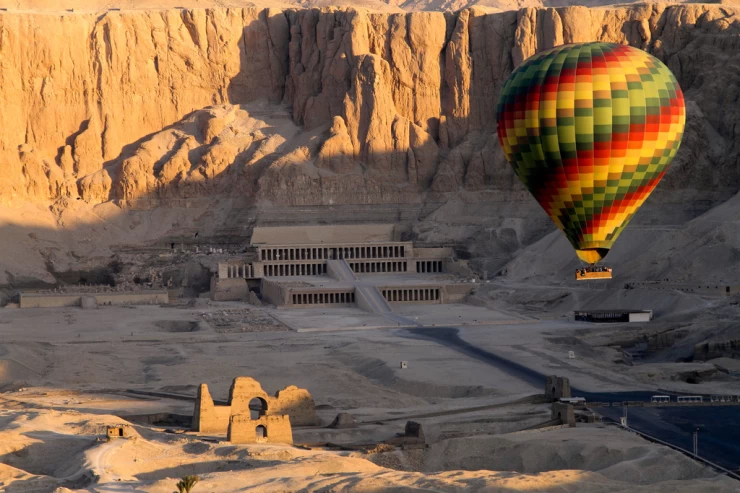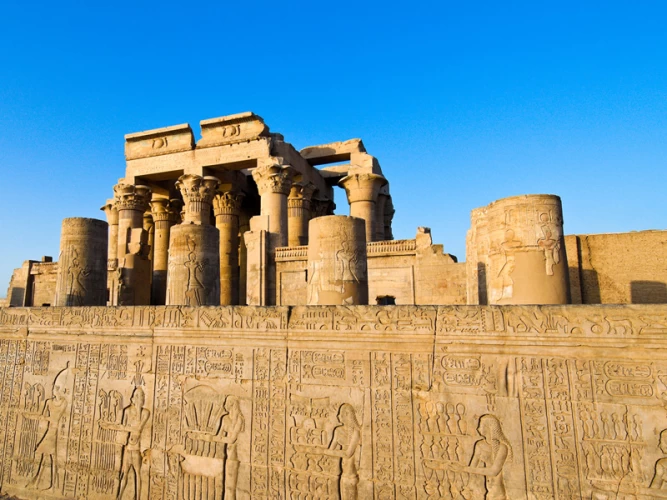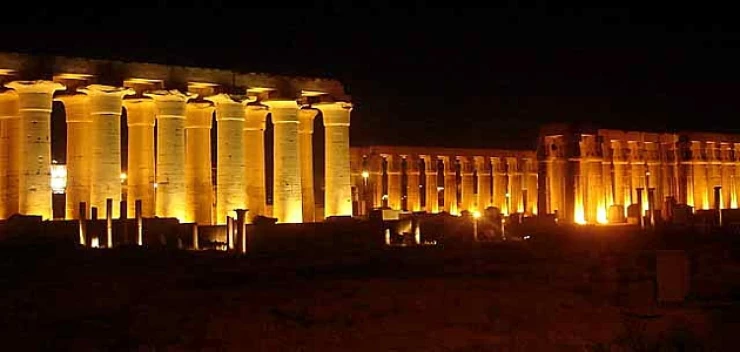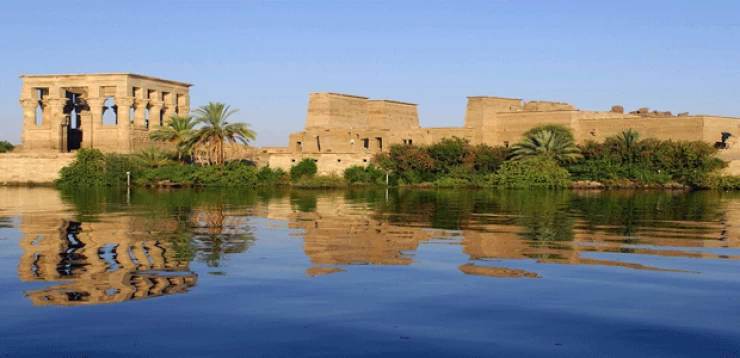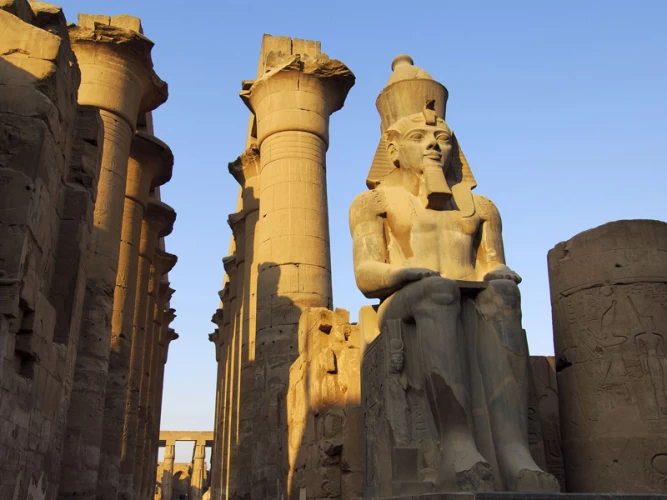
Luxor Temple Information
Luxor Temple
Luxor Temple, like most other ancient Egyptian temples, was not on an east-west axis but oriented toward Karnak. This is because Luxor Temple was the main venue for one of the most important ancient Egyptian religious ceremonies when the statues of the goddesses Amun, his wife Mot, and their son, the moon god Khonsu, were transported from their temples in Karnak in a solemn procession to Luxor Temple so that they could visit the resident idol Amun Im-Opt, a ceremony known as the Feast of the Opt.
The Luxor Temple was not built by a single king. The oldest structure was a cabin dating back to the reign of Queen Hatshepsut (circa 1473-1458 BC), while the heart of the temple was built during the reign of Amenhotep III (circa 1390-1353 BC). One of the inner chambers contains a set of scenes known as the Divine Birth Scenes, which tell the story of the king's lineage to the idol Amun-Ra himself. At the center of the temple is a colonnaded hall with a colonnaded plaza in front of it. Amenhotep III also built the corridor of columns, which consists of two rows of seven columns each. It was adorned with scenes of the Feast of the Opts and was completed during the reigns of Kings Tutankhamun (ca. 1336-1327 BC) and Hor Mahab (ca. 1323-1295 BC).
Ramses II (ca. 1279-1213 BC) made many additions to the temple. In front of the corridor of columns, he built a colonnade and a large edifice consisting of two wings representing the entrance to the temple. In addition to a group of monumental statues, the edifice included a pair of obelisks 25 meters high, only one of which remains, while the other was moved to the Place de la Concorde in Paris in 1836.
Sphinx Path
It is a road paved with stone slabs flanked on both sides by sphinxes representing King Nectanebo I (of the Thirtieth Dynasty), who built this road during his reign. This road led to the temple of the god Khonsu, located south of the temples of Karnak. This road replaced the ram road, which dates back to the reign of King Amenhotep III, as evidenced by the presence of some statues bearing the name of Amenhotep III at the southern gate of the temple of Khonsu.
First yard
It is 57 m long and 51 m wide. The axis of this courtyard is not along the axis of the temple but deviates to the east, perhaps to head towards Karnak Temple or to avoid the palaces built by Hatshepsut and Thutmose III in the current location. Ramses II's courtyard is surrounded by rows of columns, each with two rows of columns, except for the building built by Hatshepsut and Thutmose III, which is located immediately to the right of the entrance, and these columns (74 cylinders) are shaped like papyrus plants and end with crowns in the form of papyrus buds. Between the front walls in the southern half of this open courtyard are statues of King Ramses II, some of which represent him standing (11 statues) or seated (2 statues). On both sides of the entrance to the great corridor erected by Amenhotep III, we see two huge statues representing Ramses II seated on the throne, which is decorated with scenes representing the Nile God.
Columns of Thutmose III
Located in the northwest corner of Ramses II's courtyard, it was built by Hatshepsut and Thutmose III, although some believe that Ramses II, whose name is inscribed on it, erected it with stones he usurped from the tombs of Hatshepsut and Thutmose III. These tombs have four graceful cylinders shaped like a bundle of papyrus stalks made of red granite, and their capitals represent papyrus stalks. The central compartment was dedicated to the sacred boat of the god Amun-Ra, the western to the sacred boat of his wife, the goddess Mut, and the eastern to the sacred boat of his son, the moon god Khonsu. Each of the three compartments is characterized by scenes depicting the release of incense, purification, the offering of fat and sacrifices to the sacred boat of the god (or goddesses) of the compartment, as well as various religious scenes. The Abu al-Hajjaj mosque occupies the northeastern part of the courtyard.
Fourteen-acre yard
The entrance to the temple during the reign of Amenhotep III was represented by the pylon with a width of 65 and a height of 24 meters, in the middle of which a huge gate was surrounded by gaps that were dedicated to installing flagpoles, and in front of the pylon are six of Ramses II, two of which represent him sitting from black granite and four represent him standing from pink granite.
King Ramses II Monument
Constructed by King Ramses II, it is a huge gateway centered on the entrance to the temple, 65 meters wide and 24 meters high.
Temple obelisks
The edifice of King Ramses II was topped by two obelisks of pink granite stone, the western of which now adorns the Place de la Concorde in Paris since 1836, with a height of 22.84 meters and weighing 220 tons, while the eastern obelisk, which now stands in front of the North Tower, has a height of 22.52 meters, with a base height of 2.51 meters and a weight of 257 tons. It is distinguished by the prominent group of monkeys (four monkeys) that greet the sun at sunrise and are carved on its base, and the name of King Ramses II is recorded on these two obelisks in hieroglyphic inscriptions.
Latest Articles
Admin
Wadi El Rayan in Faiyum | Waterfalls in Wadi El Rayan
Wadi Al-Rayan Nature Reserve is one of the distinguished tourist areas in Fayoum Governorate, and one of the most important areas is the picturesque Wadi Al-Rayan Falls with its charming nature, which made it a destination for hundreds of thousands of tourists from different countries of the world who visit it during the year and enjoy practicing various tourist activities around the waterfalls, such as sand skiing, bird watching, and others.
Admin
Tourism in Aswan | Aswan Tourism in Egypt
Aswan Governorate has a huge wealth of diverse natural attractions, including the great Nile River, a large number of nature reserves, vast areas of deserts and mountains, and other areas of attractive nature. It is also characterized by an ancient, unique, rich and diverse civilization, as it possesses a civilizational and cultural heritage that bears witness to all the periods of history that have succeeded in it during thousands of years.
Admin
The Medical Tourism in Egypt | Therapeutic Tourism Egypt
If you are planning medical tourism in Egypt and you don't know what medical tourism places you can visit, let me tell you, dear reader, about places rich in natural resources that provide effective treatments to get rid of diseases and get the most energy and vitality.
Admin
The Nile River information
The Nile River is the longest river in the world and is located in the continent of Africa, and it divides the land of Egypt from south to north to branch into two branches that flow into the Mediterranean Sea, namely the Rosetta Branch and the Damietta Branch, its length is from its headwaters in Lake Tanganyika to its mouth in the Mediterranean Sea
Admin
Goddess Isis | The Egyptian Goddess Isis
In the first millennium BCE, Isis and Osiris became the most worshipped Egyptian deities, and Isis took on many of the traits of the other gods. The rulers of Egypt and its neighbors to the south in Nubia began building temples specifically dedicated to Isis, and her temple at Philae was one of the most important religious centres for Egyptians and Nubians alike.
Admin
God Amun Ra | Amon Ra The Master of the Ancient Egyptian gods
By merging with Ra, Amun manifested himself in creation, thereby combining in himself the two divine opposites: as Amun, he was invisible, mysterious, and detached from the world, and as Ra, he was visible and the giver of everyday life. Similarly, he was associated with Maat, the Egyptian concept of justice and balance in the universe.
